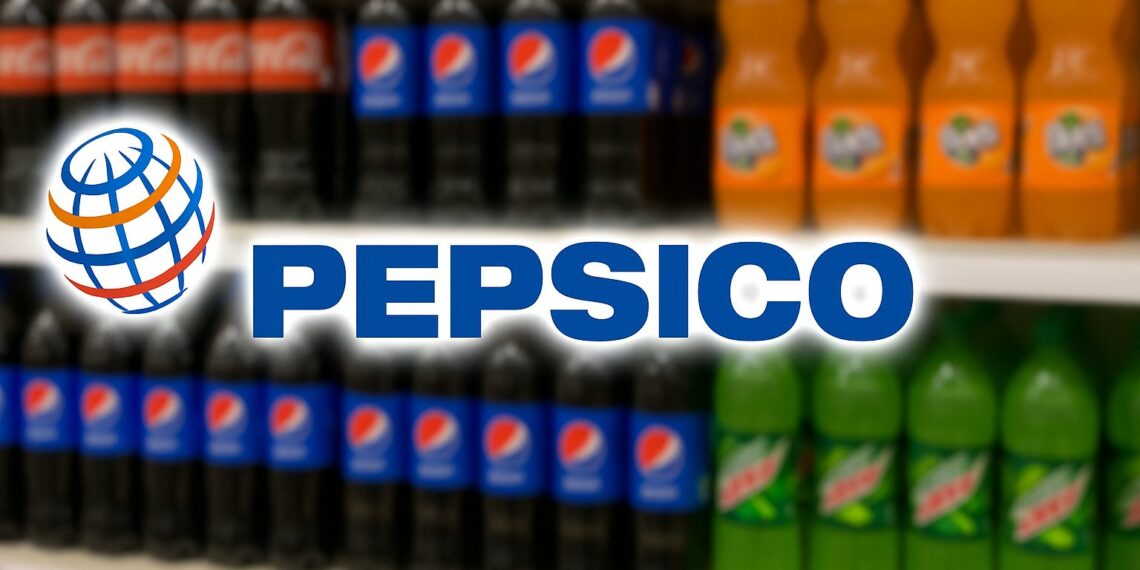PepsiCo (NASDAQ: PEP) gained in early Thursday trading after delivering better-than-expected quarterly results and naming a new Chief Financial Officer.
The company, a global powerhouse in beverages and snacks, continues to balance modest growth with disciplined cost control in an environment shaped by shifting consumer demand and inflationary headwinds.
With a new CFO from Walmart set to take over in November and a renewed focus on operational efficiency, investors are watching closely to see if PepsiCo can maintain its resilience through 2026.
Market Snapshot: Fresh Data and Price Context
As of October 9, 2025, PepsiCo stock trades at $138.84, up around 0.7% in pre-market action after its earnings release.
The stock has fluctuated between $137.39 and $142.69 during the latest session, with a 52-week range of $127.60 to $177.50.
Year to date, PepsiCo is down about 8.7%, reflecting investor caution toward the consumer staples sector despite solid fundamentals.
With approximately 1.37 billion shares outstanding, the company’s market capitalization stands near $190 billion.
PepsiCo remains a dividend powerhouse, paying a quarterly dividend of $1.42 per share (annualized $5.69) — translating to a forward yield of roughly 4.1% at current prices.
The most recent payout was on September 30, 2025, following an ex-dividend date of September 5.
Quarterly Results: Modest Growth, Controlled Costs
For the third quarter of fiscal 2025, PepsiCo reported:
- Revenue: $23.94 billion (+2.7% year-over-year)
- Organic sales growth: +1.3%, slightly below the expected +2.1%
- Volume: −1% across food and beverage categories
- Core EPS: $2.29, topping consensus by $0.03
Growth was led by Europe, the Middle East, and Africa (EMEA), where organic sales rose 5.5%, offsetting a 3% decline in the North America Foods segment.
The company attributed the margin pressure to input-cost inflation and promotional spending in key beverage markets.
Despite weaker volumes, PepsiCo managed to deliver a small earnings beat — a reflection of strong pricing discipline and ongoing cost optimization.
CEO Commentary: Innovation Meets Efficiency
CEO Ramon Laguarta emphasized that PepsiCo’s priorities remain focused on “accelerating growth and aggressively optimizing our cost structure.”
He cited three key pillars for 2026 and beyond:
- Innovation: Accelerating new product launches and reformulations across beverages and snacks.
- Value Management: Refining “price-pack architecture” to balance affordability and profitability.
- Efficiency: Streamlining operations and leveraging automation to fund growth initiatives.
Laguarta noted that the company is “right-sizing its cost base” to support reinvestment in marketing and digital transformation while protecting margins in a tougher macro environment.
Regional Performance: International Strength vs. U.S. Softness
Europe, Middle East & Africa (EMEA):
Strongest performance with mid-single-digit growth, driven by premium beverages and expanded retail penetration.
Asia-Pacific:
Steady progress as price increases offset softer unit volumes, particularly in China.
North America Foods (NAF):
Down 3%, reflecting weaker demand for salty snacks and baked goods as consumers trade down to private-label options.
PepsiCo Beverages North America (PBNA):
Reported a low-double-digit decline in operating profit, pressured by promotions and higher material costs.
These regional contrasts highlight PepsiCo’s global diversification advantage: strong overseas demand continues to balance cyclical softness in North America.
Leadership Update: Walmart’s Steve Schmitt to Become CFO
PepsiCo also announced that current CFO Jamie Caulfield will retire, with Steve Schmitt, CFO of Walmart U.S., set to take over the role effective November 10, 2025.
Caulfield will remain as an advisor until mid-2026 to ensure a smooth transition.
Investors welcomed the move, noting Schmitt’s deep experience in financial optimization and large-scale retail operations. His track record at Walmart suggests PepsiCo may pursue even tighter cost management and improved working-capital efficiency in the years ahead.
Outlook: Guidance Holds Steady
For the full year 2025, PepsiCo expects:
- Low-single-digit organic revenue growth
- Core constant-currency EPS approximately flat versus 2024
- Total shareholder returns around $8.6 billion, including $7.6 billion in dividends and $1.0 billion in share repurchases
While near-term growth remains modest, PepsiCo’s commitment to strong cash returns reinforces its appeal as a defensive income stock.
The company’s 50-year streak of annual dividend increases underscores its reputation as one of the most dependable dividend payers in the S&P 500.
Competitive Positioning: PepsiCo vs. Coca-Cola
The PepsiCo-Coca-Cola rivalry remains one of the most enduring in global business.
While Coca-Cola continues to dominate pure beverage sales, PepsiCo’s broader portfolio — spanning snacks, energy drinks, and sports beverages — gives it diversified revenue streams that help smooth cyclical fluctuations.
Keurig Dr Pepper (KDP) has carved out a niche in U.S. retail and coffee systems, but lacks the global footprint to challenge PepsiCo’s scale.
With its balanced mix of beverages (Pepsi, Gatorade, Mountain Dew) and snacks (Lay’s, Doritos, Cheetos), PepsiCo continues to deliver steady, recession-resistant growth — albeit with slower earnings momentum than Coca-Cola’s beverage-only model.
Valuation: Defensive Yet Fairly Priced
At $138.84 per share, PepsiCo trades at a forward P/E ratio of roughly 21, close to its five-year average and modestly below Coca-Cola’s multiple of about 23.
Analysts generally view PepsiCo as fairly valued, with limited near-term upside but strong defensive qualities.
Its dependable dividend, stable margins, and disciplined capital allocation make it a cornerstone holding for income-focused portfolios.
Given persistent cost inflation and modest top-line growth, investors can expect mid-single-digit total returns over the next 12 months, driven mainly by the dividend yield.
Strategic Outlook: Innovation, Automation, and Portfolio Resilience
Looking ahead, PepsiCo plans to invest heavily in:
- Digital supply-chain transformation and AI-driven demand forecasting
- Health-oriented product innovation, including reduced-sugar beverages and protein-based snacks
- Sustainability initiatives, targeting 100% recyclable packaging by 2030
These measures are designed to position PepsiCo for steady, inflation-adjusted growth while protecting margins through productivity gains.
Long-term, the company aims to sustain 5–6% EPS growth, supported by moderate pricing power and an expanding international footprint.
Conclusion: A Defensive Blue Chip with Reliable Income
PepsiCo’s third-quarter report reinforces its status as a steady, defensive compounder.
Despite volume softness in North America, the company remains profitable, cash-rich, and committed to shareholder returns.
The leadership transition to Steve Schmitt signals a renewed focus on financial discipline, while the consistent dividend yield above 4% keeps the stock attractive to long-term income investors.
In short: PepsiCo stock may not be a high-flyer, but it’s still one of Wall Street’s most reliable income plays — offering stability, resilience, and measured growth in an uncertain market.
FAQ: PepsiCo Stock 2025
1. Why did PepsiCo stock rise after earnings?
Because the company beat EPS expectations by $0.03 and announced the appointment of Walmart’s CFO, boosting confidence in future cost discipline.
2. What were the key growth drivers this quarter?
Strong performance in EMEA and Asia offset declines in North American snacks and beverages.
3. How much does PepsiCo return to shareholders annually?
Approximately $8.6 billion in 2025, including $7.6 billion in dividends and $1 billion in share buybacks.
4. What is PepsiCo’s current dividend yield?
About 4.1%, based on an annualized payout of $5.69 per share.
5. Is PepsiCo still a good long-term investment?
Yes — it remains a dependable dividend stock with steady cash flow, solid brands, and moderate upside potential.
Disclaimer
This article is for informational and educational purposes only and does not constitute financial advice, investment recommendation, or a solicitation to buy or sell securities.
All market data reflect conditions as of October 9, 2025 and may change without notice.
Investors should perform their own due diligence or consult a licensed financial advisor before making investment decisions.







